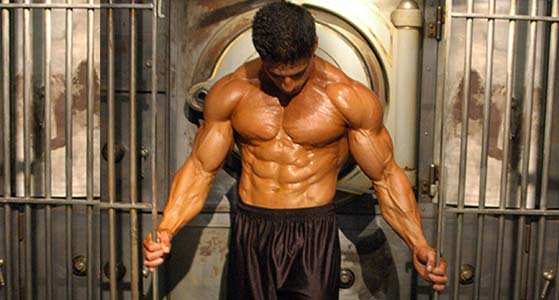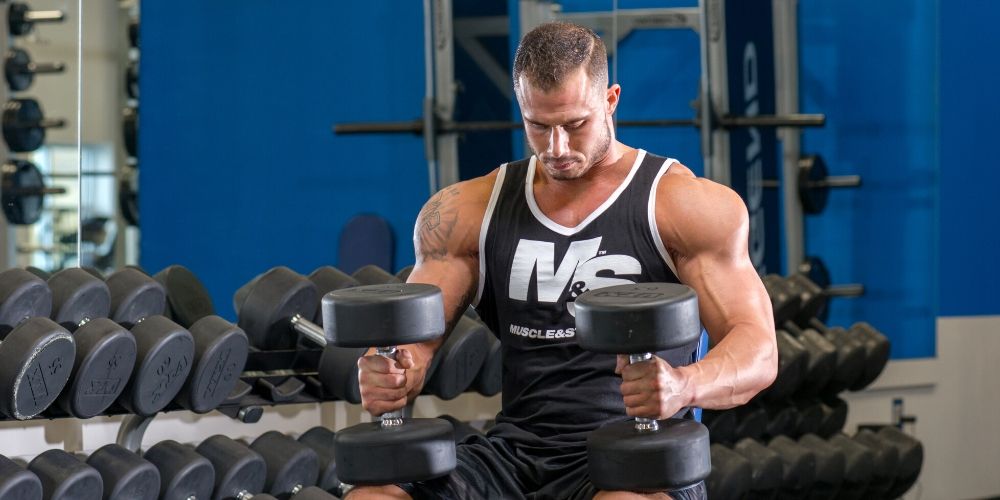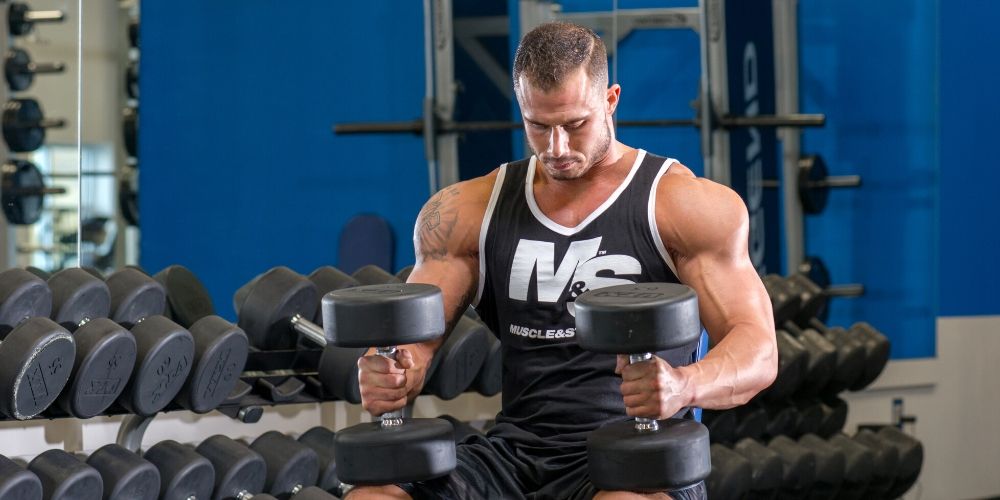Boulder Shoulders II
Boulder Shoulders II – Presses are essential to maximize the potential for size and development of your shoulders. Most of you already know this and so you include presses to ensure that you have done all you can to blast your delts into new growth.
Even so, I must ask you, on what day are your front delts sorer, after chest or shoulder day? For most of you, I know it is after chest day, with some of you acquiring extreme soreness from pressing at a flat bench angle. Basically it boils down to the fact that a great deal of fiber in your front delt region was better stimulated, not during your shoulder routine, but during a workout where you made no deliberate attempt to work them. sbobet

This peculiar scenario has led me to think outside the box with respect to pressing for the delts and I desire to share my reasoning with the discussion that follows. agen bola
Many believe presses to be the best exercise to increase the width of the shoulders. The front delts will certainly contribute toward this effect, yet it is actually the side region of the delts that is most responsible for creating the illusion of width. Even with the most concentrated effort, presses will only target the frontal portion of fiber in the side delt region, primarily when performing them while sitting upright. You will therefore find it beneficial to rely on pressing movements to aid in the development of the front delts, and you can take them to the next level by opening the doors to include new angles from which to press. https://www.mustangcontracting.com/
There is much to applaud with regard to the design of mainstream resistance training regimens, as the implementation of the vast majority of them will safely and effectively achieve goals for a wide audience. Nonetheless, when it comes to the most advanced levels of muscular development, they tend to fall short in certain areas. Such is the case with the upright bench (85-90-degree angle) being accepted as the standard shoulder pressing angle in most routines. While it is necessary to press from this angle, one could argue that it is the most unnatural and least effective out of the vast number of constructive pressing angles for the shoulders. This is especially true if it is done while trying to keep the back firmly against the pad to maintain a strict upright position.
Performed properly, one must slightly arch the back when lifting overhead and this includes pressing on a standard upright bench. If you want proof, simply lift something over your head and you will notice that you naturally fall into this position. As this implies, I am against using a behind the neck press in an attempt to better target the side delt region, as it hinders strength and wreaks havoc on the rotator cuff, delivering only half of what an upright row or side raise can do. Again, apart from targeting a small portion of the side deltoid region, shoulder presses primarily work the front delts. To most effectively activate the front delts, you must keep the arms in front of the body in addition to bringing the arms together as you press upward. This is why they are sorer after chest work than from pressing in the upright position on shoulder day and the basis for integrating higher-level inclines into your shoulder routine.
While it might vary based on individual structure, your front delts will perform the bulk of the work when pressing above a 50-degree incline and up. If you had to pick, you would be wiser to eliminate the beloved 90-degree angle than you would forsaking those between 60 to 85-degrees. They are unrivaled in terms of being the most natural angles from which to press and stimulate an incredibly vast area of fiber while drastically minimizing rotator cuff damage. Similar to chest work, pressing angles must be systematically rotated, with each ending up at the beginning of your workout consistently over time.
Will your upper chest be worked at some of the lower angles in this range? Yes, just as your front delts are inevitably worked when doing incline work for chest. And given that the upper chest is a very common weakpoint, extra stimulation from time to time isn’t such a bad thing. In fact, I sometimes find it worthwhile to hit both the upper chest and front delts together simply because of the great extent of which these two muscles work in conjunction with each other.
I am not a fan of working the front delts after a thorough chest workout or skipping them altogether. Some profess this believing that chest presses will allow for adequate stimulation of the front delts. Like every other muscle, I believe they need to be worked both directly and when you are fresh for best results. Only for the sake of swaying you away from this, I will state that I have developed a pair of freakishly thick, round, and separated front delts. Moreover, I did it by working them on their own day for the last fifteen years, with absolutely no sign of tendonitis or even a hint of rotator cuff pain.
To avoid these conditions, you simply need to organize your shoulder presses around your chest workout to avoid over-training. Aside from structuring your chest and shoulder workouts days apart from each other, a general model might be to start with side delt work, using raises and upright rows, on weeks where you begin your chest work from an incline angle. In order to maximize development in the shoulders, you will have to rotate the emphasis of the three deltoid heads anyway. And given that the side delts are the least activated during other upper-body movements, being stimulated mainly during your shoulder routine, it would be a good idea to start with them more often than not, especially if they are lagging behind.
Speaking of side deltoid development, a fail-proof method to ensure that you never reach your full muscular potential in this region is to rely on side raising movements to build them. Compound movements are essential to maximize hypertrophy of the side delt region just as they are for every other bodypart. Why would they be any different? Relying on side raises to maximize growth of the side delts is like depending on flys or cable cross-overs for maximum hypertrophy of the chest, extensions for the quads, or front raises for the anterior deltoids. So, you should not rely on side-raises as the chief exercise for the side delts, with the consistent application of the various forms of upright rowing movements being necessary to maximize the flare of this region.
Lastly, you will find it very efficient to exhaust a region of the delts and transition to another. An example would be to first perform your side raises and upright rows, move onto presses that work a portion of the side delts, and hit higher angle incline presses that primarily target the front delts from there. Ultimately, each weekly regimen should allow for the orderly stimulation and adequate recovery of every muscle on a consistent basis.

Making use of the raising, pressing, and rowing strategies discussed in these articles will have a very positive effect with regard to a thorough stimulation of your delt region. Surely, they are essential if your goal is maximum development! Of course, they must be combined with the other principles and strategies at your disposal, namely, the strategic usage of range-of-motion, rep cadence, and rep range, among others. The correct combination of these variables will allow you to achieve your own unique goals with absolute certainty!…
Continue reading